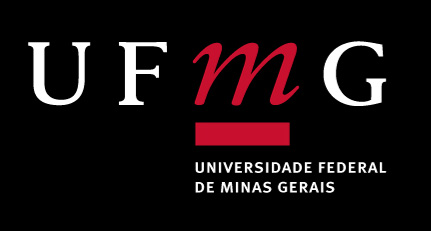Land cover and land use mapping in the Pampa biome using different orbital sensors and Random Forest classifier
DOI:
https://doi.org/10.35699/2237-549X.2023.46915Keywords:
Sentinel 2, Thermal Infrared, ALOS, Machine LearningAbstract
The objective of the present research was to test the Random Forest algorithm for the classification of land use and land cover in an area with great declivity variation in the Pampa biome using optical data/Sentinel 2, thermal data/Landsat 8, and Digital Elevation Model ALOS PALSAR. The town of Caçapava do Sul was chosen as the pilot area for the development of the research, being considered the “state’s geodiversity capital”. The proposed methodology followed five main steps: 1 – segmentation of images, 2 – training, 3 – calculation of zonal statistics for each segment, 4 – classification, and 5 – validation. Twelve classifications of land cover were generated with different combinations of data. Crossing reference samples and classified maps made it possible to generate the accuracy metrics, among them the Global Accuracy (GA). The best general performance was ascertained in the classification achieved with the combination of optical bands and DEM, with 84,59% of GA, with the statistically significant difference among the other classifications. In this sense, we highlight the importance of the digital terrain elevation model combined with the optic data for the mapping of land use and land cover of regions with greater relief variation.
Downloads
References
ALMEIDA, C. A. de; MAURANO, L. E. P.; VALERIANO, D. M.; CÂMARA, G.; VINHAS, L.; MOTTA, M.; GOMES, A. R.; MONTEIRO.; SOUZA, A. A. A.; MESSIAS, C. G.; RENNÓ, C. D.; ADAMI, M.; ESCADA, M. I. S.; SOLER, L. S.; AMARAL, S. Metodologia utilizada nos sistemas PRODES e DETER. 2º Edição: INPE, São José dos Campos, 2022.
ALMEIDA-FILHO, R.; ROSENQVIST, A.; SHIMABUKURO, Y.E.; dos SANTOS, J.R. Evaluation and Perspectives of Using Multitemporal L-Band SAR Data to Monitor Deforestation in the Brazilian Amazônia. IEEE Geosci. Remote Sensing, v. 2, p. 409–412, 2005.
ASSIS, L. F. F. G, FERREIRA, K. R., VINHAS, L., MAURANO, L., ALMEIDA, C., CARVALHO, A., CAMARGO, C. TerraBrasilis: A Spatial Data Analytics Infrastructure for Large-Scale Thematic Mapping. ISPRS International Journal of Geo-Information, v. 8, n. 11, 513, 2019.
BABOO, S. S; DEVI, M. R. An analysis of different resampling methods in Coimbatore, District. Global Journal of Computer Science and Technology, v. 10, n. 15, p. 61 – 66, 2010.
BELGIU, M.; DRAGUT, L. Random Forest in remote sensing: A review of applications and future directions. ISPRS Journal of Photogrammetry and Remote Sensing, v. 114, p. 24 – 31, 2016.
BDC – Brazil Data Cube. Satellite Image Time Series Analysis - SITS Disponível em: <http://www.brazildatacube.org/sits-satellite-image-time-series/>. Acesso: out. 2023.
BORBA, A. W. Proposta de uma (Geo)identidade visual para Caçapava do Sul, “Capital Gaúcha da Geodiversidade”. Geographia Meridionalis, v. 1, n. 2, 405–411, 2015.
BORBA, A. W. Um geopark na região de Caçapava do Sul (RS, Brasil): uma discussão sobre viabilidade e abrangência territorial. Geographia Meridionalis, v. 03, n. 01, p. 104–133, 2017
BREIMAN, L., 2001. Random forest. Machine Learning, v. 45, p. 5 – 32, 2001.
CHO, D. F.; SCHWAIDA, S. F.; CICERELLI, T. A.; RAMOS, A. P. M. R.; SANO, E. E. Desempenho do Algoritmo de Classificação de Imagens Random Forest para Mapeamento do Uso e Cobertura do Solo no Cerrado Brasileiro. Anuário do Instituto de Geociênicas, v. 44, 37979, p. 1 - 11, 2021.
COMANICIU, D.; MEER, P. Mean shift: a robust approach toward feature space analysis. IEEE Transactions on Pattern Analysis and Machine Intelligence, v. 24, n. 5, p. 603–619, 2002.
CONGALTON R. G.; GREEN, K. Assessing the Accuracy of Remotely Sensed Data. 3ª ed. Taylor & Francis Group, 2019.
CORCORAN, J., KNIGHT, J., GALLANT, A. Influence of multi-source and multitemporal remotely sensed and ancillary data on the accuracy of random forest classification of wetlands in northern Minnesota. Remote Sensing, v. 5, p. 3212–3238, 2013.
CPRM. COMPANHIA DE PESQUISA DE RECURSOS MINERAIS. Mapa Geológico do Rio Grande do Sul. Escala 1: 750.000. Legenda expandida. CPRM/SGB. Porto Alegre, 2006.
CPRM. COMPANHIA DE PESQUISA DE RECURSOS MINERAIS. Geodiversidade do Estado do Rio Grande do Sul – Programa Geologia do Brasil – Levantamento da Geodiversidade. VIERO, A. C. & SILVA, D. R. A. (orgs). Porto Alegre, 2010. 250p
DINIZ, J. M. F. de S.; MACIEL, D. A.; GAMA, F. F.; ADAMI, M. Avaliação do Sentinel-2, NDVI e MLME para Mapeamento do Uso e Cobertura da Terra. Anuário do Instituto de Geociências – UFRJ, v. 43, n.2, p. 381 – 391, 2020.
DU, P., SAMAT, A., WASKE, B., LIU, S., LI, Z. Random Forest and rotation forest for fully polarized SAR image classification using polarimetric and spatial features. ISPRS J. Photogramm. Remote Sensing, v. 105, p. 38–53, 2015.
EISAVI, V.; HOMAYOUNI, S.; YAZDI, A.M.; ALIMOHAMMADI, A. Land cover mapping based on random forest classification of multitemporal spectral and thermal images. Environmental Monitoring and Assessment, v. 187, n. 5, p. 1–14, 2015.
GISLASON, P.O., BENEDIKTSSON, J.A., SVEINSSON, J.R. Random forests for land cover classification. Pattern Recogn. Lett., v. 27, p. 294–300, 2006.
GLOBAL FOREST WATCH. Monitoramento de Florestas Projetado para a Ação. Disponível em: <https://www.globalforestwatch.org/>. Acesso: out. 2023.
GUAN, H., Li, J., CHAPMAN, M., DENG, F., JI, Z., YANG, X. Integration of orthoimagery and lidar data for object-based urban thematic mapping using random forests. Int. J. Remote Sensing, v. 34, 5166–5186, 2013.
HUETE, A. R. A soil adjusted vegetation index (SAVI). Remote Sens. Environ., v. 25, p. 295-309, 1988.
IBGE. Município de Caçapava do Sul. Disponível em: <https://cidades.ibge.gov.br/brasil/rs/cacapava-do-sul/panorama>. Acesso: 04 mai. 2023.
INPE. INSTITUTO NACIONAL DE PESQUISA ESPACIAIS – Coordenação Geral de Observação da Terra. Programa de Monitoramento da Amazônia e demais Biomas e Fundação de Ciência, Aplicações e Tecnologia Espaciais – FUNCATE. ALMEIDA et al., 2019. Monitoramento Ambiental dos biomas brasileiros por satélite: mata atlântica, caatinga, pampa e pantanal - Relatório de Referência metodológica dos subprojetos 1 a 4 (versão 1).
JICA-JAXA Forest Early Warning System in the Tropics. Watching on Deforestation. Disponível em: <https://www.eorc.jaxa.jp/jjfast/>. Acesso: out. 2023.
JIN, H; CHEN, X; WANG, Y; ZHONG, R; ZHAO, T; LIU, Z; TU, X. Spatio-temporal distribution of NDVI and its influencing factors in China. Journal of Hydrology, v. 603, 127129, 2021.
JUSTICE, C. O.; VERMOTE, E.; TOWNSHEND, J. R. G.; DEFRIES, R.; ROY, D. P.; HALL, D. K.; SALOMONSON, V.V.; PRIVETTE, J. L.; RIGGS, G.; STRANHLER, A. The moderate resolution imaging sprectroradiometer (MODIS): land remote sensing for global change research. IEEE Transactions on Geocience and Remote Sensing, v. 36, n. 4, p. 1228 – 1249, 1998.
MA, Z., REDMOND, R.L. Tau coefficients for accuracy assessment of classification of remote sensing data. Photogrammetric Engineering and Remote Sensing, v. 61, n. 4, p. 453 – 439, 1995.
MA, M.; LIU, J.; LIU, M.; ZENG, J.; LI, Y. Tree Species Classification Based on Sentinel-2 Imagery and Random Forest Classifier in the Eastern Regions of the Qilian Mountains. Forests, v. 12, 1736, p. 1 – 12, 2021.
OLOFSSON, P.; FOODY G. M.; HEROLD, M.; STEHMAN S. V.; WOODCOCK, C. E.; WULDER, M. A. Good practices for estimating area and assessing accuracy of land change. Remote Sensing of Environment, v. 148, p. 42 – 57, 2014.
PAN, T. N.; KUCH, V.; LEHNERT, L. W. Land Cover Classification using Google Earth Engine and Random Forest Classifier—The Role of Image Composition. Remote Sensing, v. 12, 2411, p. 1 – 22, 2020.
PATSALIDIS, S.; AGAPIOU, A.; HADJIMITSIS, D. G. Random Forest classification analysis of Sentinel-2 and Landsat-8 images over semi-arid environment in the Eastern Mediterranean. In: Internation conference on geographic information, 2019. Proceedings... Amsterdam: Springer, 2020.
PEREIRA, P. R. M.; OLIVEIRA, M. M. N.; BOLFE, E. L.; MACARRINGUE, L. S. Comparação da classificação do uso e cobertura da terra em imagens Landsat-8 e Sentinel-2 no Cerrado Maranhense. GEOUERJ, n. 42, e66306, 2023.
PONTIUS Jr., R. G.; MILLONES, M. Death to Kappa: birth of quantity disagreement and allocation disagreement for accuracy assessment. International Journal of Remote Sensing, v. 32, n. 15, p. 4407 – 4429, 2011.
RODRIGUEZ-GALIANO, V.F., GHIMIRE, B., ROGAN, J., CHICA-OLMO, M., RIGOL-SANCHEZ, J.P. An assessment of the effectiveness of a random forest classifier for landcover classification. ISPRS J. Photogramm. Remote Sensing, v. 67, p. 93–104, 2012.
ROUSE, J. W., Rouse, J. W., HAAS, R. W., SCHELL, J. A., DEERING, D. W., HARLAN, J. C., ROUSE, J. W., HAAS, R. H., SHELL, J. A., DEERING, D. W., HARLAN, J. C., ROUSE, J. W., ROUSE, J., HASS, RH. Monitoring the vernal advancement and retrogradation (green wave effect) of natural vegetation. Greenbelt: NASA, 371p. 1974.
SARTORI, M.G.B. O Vento Norte. Santa Maria: Gráfica e Editora Palloti, 2016.
SATVeg. Sistema de Análise Temporal da Vegetação. Disponível em: <https://www.satveg.cnptia.embrapa.br/satveg/login.html>. Acesso: out. 2023.
SEN2COR. Science Toolbox Exploitation Platform (STEP). European Space Agency. Disponível em: <http://step.esa.int/main/third-party-plugins-2/sen2cor/>. Acesso: set. 2022)
SHEYKHMOUSA, M., MAHDIANPARI, M., GHANBARI, H., MOHAMMADIMANESH, F., GHAMISI, P., HOMAYOUNI, S. Support vector machine versus random forest for remote sensing image classification: A meta-analysis and systematic review. IEEE Journal of Selected Topics in Applied Earth Observations and Remote Sensing, 13, 6308-6325, 2020.
SOTHE, C.; LIESENBERG V.; ALMEIDA, C. M.; SACHIMALSKI, M. B. Abordagens para classificação do estádio sucessional da vegetação do Parque Nacional de São Joaquim empregando imagens Landsat-8 e Rapideye. Bulletin of Geodetic Sciences, v. 23, n. 3, p. 389 – 404, 2017.
SOUZA, C. L.; PONZONI, F. J. Relação entre índice de área foliar, estimado através de sensoriamento remoto, e parâmetros dendrométricos em floresta implantada de Pinus spp. In: Simpósio Brasileiro de Sensoriamento Remoto, 9; 1998, Santos. Anais... Santos: INPE/SELPER, p. 1549-1560, 1998.
SOUZA JR., C. M. et al. Reconstructing Three Decades of Land Use and Land Cover Changes in Brazilian Biomes with Landsat Archive and Earth Engine. Remote Sensing, v.12, p. 2 – 27, 2020.
STEHMAN S. V.; FOODY G. M. Key issues in rigorous accuracy assessment of land cover products. Remote Sensing of Environment, v. 231 p. 1 – 23, 2019.
STRECK, E.V.; KÄMPF, N.; DALMOLIN, R.S.D.; KLAMT, E.; NASCIMENTO, P.C.; SCHNEIDER, P.; GIASSON, E. & PINTO, L.F.S. Solos do Rio Grande do Sul. 2.ed. Porto Alegre, EMATER/RS-ASCAR, 222p, 2008. SUN, L., SCHULZ, K. The improvement of land cover classification by thermal remote sensing. Remote Sensing, v. 7, 8368, 2015.
TRINDADE, P. M. P.; PEIXOTO, D. W. B.; KUPLICH, T. M.; ALMEIDA, C. A. Desempenho da classificação supervisionada com a inclusão da banda termal em áreas selecionadas do bioma Pampa, Brasil. In: Congresso Brasileiro de Agroinformática, 13; 2021. Anais... p. 62-70, 2021.
WASNIEWSKI, A.; HOSCITO, A.; ZAGAJEWSKI, B.; MOUKÉTOU-TARAZEWICZ, D. Assessment of Sentinel-2 Satellite Images and Random Forest Classifier for Rainforest Mapping in Gabon. Forests, v. 11, p. 1 – 17, 2020.
Downloads
Published
How to Cite
Issue
Section
License
Copyright (c) 2023 Patricia Michele Pereira Trindade, Daniela Wancura Barbieri Peixoto, Greice Vieira Silveira, Tatiana Mora Kuplich, Igor da Silva Narvaes

This work is licensed under a Creative Commons Attribution 4.0 International License.
Os artigos desta revista obedecem a licença Creative Commons — Attribution 4.0 International — CC BY 4.0









